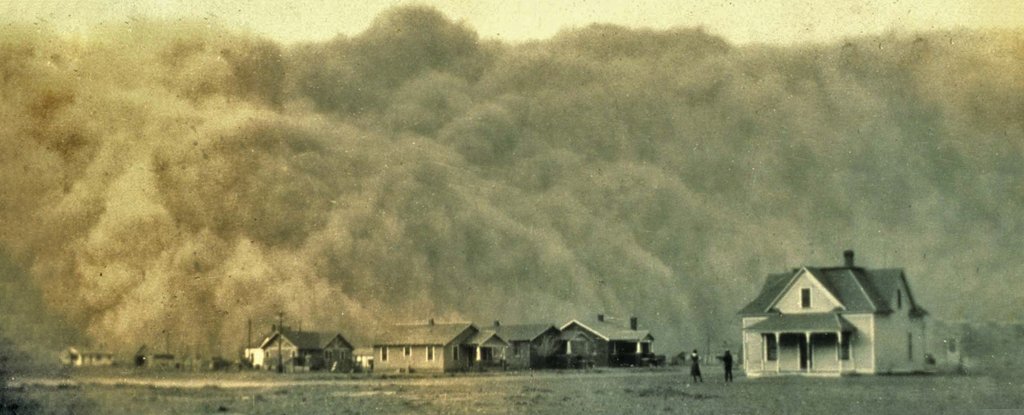Science Alert May 19, 2020
During 1930s Dust Bowl drought across North America’s Great Plains caused widespread crop failures, large dust storms and considerable out-migration. This coincided with the central United States experiencing its hottest summers of the twentieth century in 1934 and 1936, with over 40 heatwave days and maximum temperatures surpassing 44 °C at some locations. According to an international team of researchers (Australia, UK, Sweden) heatwave activity in similarly rare events would be much larger under today’s atmospheric green house gas forcing the return period of a 1-in-100-year heatwave summer (as observed in 1936) would be reduced to about 1-in-40 years. A key driver of the increasing heatwave activity and intensity is reduced evaporative cooling and increased sensible heating during dry springs and summers…read more. TECHNICAL ARTICLE

Stratford, Texas, April 1935. (George E. Marsh Album/NOAA)